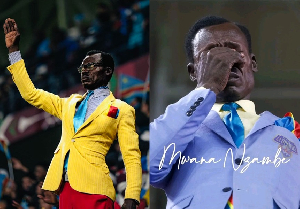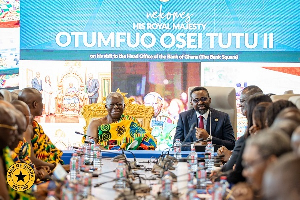The people of Ashanti boast of one of the most vibrant cultures in Ghana, which is represented in their traditions, art, and social structures.
In Ashanti culture, significance is given to colour, which is often used to communicate issues such as mood and occasion.
In the same vain, the use of large umbrellas by chiefs, depending on size and other characters, is used to convey identity, authority, and also embodies spiritual significance as well as communicates other issues.
As head of the Ashanti Kingdom, Otumfuo Osei Tutu II is the authority figure under whom several paramount chiefs serve.
Traditionally, when Otumfuo sits in state for a funeral, he wears black, which in Akan culture is predominantly associated with mourning and represents sorrow.
While all his subjects and subchiefs take precedent after the Otumfuo, the Paramount Chief of Tepa, as witnessed at the recently held burial rites of the late Berekumhene, Daasebre Amankona Diawuo II, wears white and uses a white umbrella.
This diversion, according to Ashanti culture, is rooted in the role of Tepa Baanie, a revered deity under the Tepahene in the history of the kingdom.
Tepa Baanie is known for its mystic powers, including granting children to barren women, as well as playing significant spiritual roles in the expansion wars fought by the Ashanti Kingdom in the past.
Thus, in recognition of Tepa Baanie, the Tepahene and his priest are allowed to wear white whereas the Asantehene and other chiefs wear black when the kingdom’s overlord sits in state to mourn.
As a source of spiritual power and protection to the reign of Otumfuo, the Tepa Baanie priest performs rituals for the Asantehene.
In a video from the Berekumhene’s funeral, the Tepa Baanie priest; while his chief paid homage to Otumfuo, could be seen tapping the Asantehene with an animal tail.
A deity carried by the entourage of the Tepahene was also brought to Otumfuo who placed his hand on the deity for fortification.
GA/SARA
Click here to follow the GhanaWeb General News WhatsApp channel
Watch the latest episode of Everyday People below:
Ghana’s leading digital news platform, GhanaWeb, in conjunction with the Korle-Bu Teaching Hospital, is embarking on an aggressive campaign which is geared towards ensuring that parliament passes comprehensive legislation to guide organ harvesting, organ donation, and organ transplantation in the country.
General News of Sunday, 26 November 2023
Source: www.ghanaweb.com













